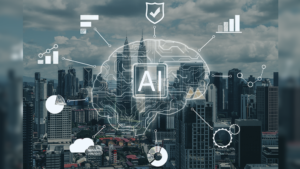By Murray Morrison, Founder at Tassomai
Education has barely changed in aeons. Certain developments such as the introduction of secondary moderns or academies, or the changes from O Levels to GCSE may seem defining, but the underlying pedagogical model has been essentially the same for centuries.
However the methodologies are dressed up, however the focus changes, education tends to be something that follows a relatively set path: teachers deliver a lesson, learners apply knowledge in written work, some assessment is made, and feedback is given.
This pattern repeats in an ever outwardly-spiralling scope – content accumulates, students expand their knowledge, assessments move from low-stakes (pop quizzes and homeworks) to life-defining (terminal exams).
EdTech will change everything….
Well, maybe. It depends on what is meant by ‘EdTech’. Arguably any product, device or technique that facilitates education is EdTech. Even the slate and the chalk, the blackboard or the textbook. Each advance, in their turn, has developed education from the oral tradition to the current situation. None of them has really fixed the problem in the system – that a one-size-fits-all system has historically left most children under-educated.
But the introduction of modern computation power, mobile technology and data in the cloud has been the first truly seismic shift, perhaps for centuries.
One size fits few
With schools trying to deliver content by ‘teaching from the front’ with classes of 20 students at a time, the traditional system of education really only served a fraction of its children. Essentially students of lower ability would be left behind, become disaffected and drop out; educational mobility will have been extremely poor. It will not have been a coincidence that social mobility has equally been lacking.
But consider the mammoth task facing educators attempting to take practices that work in a tutorial, one-to-one setting, and apply them at massive scale. Consider even one crucial aspect of the learning template: feedback.
If a teacher has 25 students who have listened to them explain a concept, the traditional means of checking that the lesson has been absorbed is homework or an exam. Once the work has been done and handed in, the teacher has to mark it, give individual feedback, aggregate that data and finally infer student levels of understanding – and if students miss homeworks, they leave gaps in the dataset.
The student could get their feedback days or weeks later – too late to be useful. But what can a teacher do with this data to help the students who need it? Reteach the topic? Maybe… Give some focused intervention to those who are struggling? Or just accept that some kids are weaker in that area and move on. When each teacher has dozens of lessons to get through, multiple classes to juggle and no time to spare, you can bet there are a lot of dropped balls.
Unsurprisingly, it’s those who are less able that are likeliest to suffer.
Changing teaching and learning
With recent advances in EdTech, teachers are now able to outsource much of that educational path, and outsource swathes of the workload that goes with it. Education software is being used to deliver content, it’s being used to support students’ practice and application, it can make assessments and mark them, and it can give instant feedback.
Crucially, the more advanced solutions out there are able to use their assessments and feedback to adapt to the student – bringing modern education to a state where each child is able to access personalised learning and make genuine progress.
I’m often asked whether this kind of technology is making the teacher obsolete – but I would argue that it does precisely the opposite. Teachers have spent entire careers with their ability to teach being heavily diluted by stultifying data-gathering exercises. Finally they are empowered with the knowledge of their students’ needs and liberated to spend their time making a difference.
And students themselves now, rather than experiencing education passively – as something that is done to them – are using technology to conduct their own learning and to learn not only the material required on the course but also to learn about themselves and their particular abilities, strengths and weaknesses.
Knowledge is Essential
Ironically, as education has begun to embrace advanced EdTech, the pedagogical emphasis has become a great deal more traditional and old-fashioned. In designing a curriculum that prepares young people for their futures, raising aspiration and attainment, the consensus is fast becoming one where knowledge is at the centre.
We’ve laboured under the misapprehension for a while that knowledge of facts is unnecessary because we now have the internet in our hands. But when our social and cultural currency still deals in knowledge, and this knowledge forms the foundations upon which higher learning is built, getting students to know facts is a key part of developing educational mobility.
Knowledge is power – but beyond knowledge of facts, it’s the knowledge of ourselves and each other that is being facilitated by EdTech.
Education – and teaching – is finally realising its potential.









